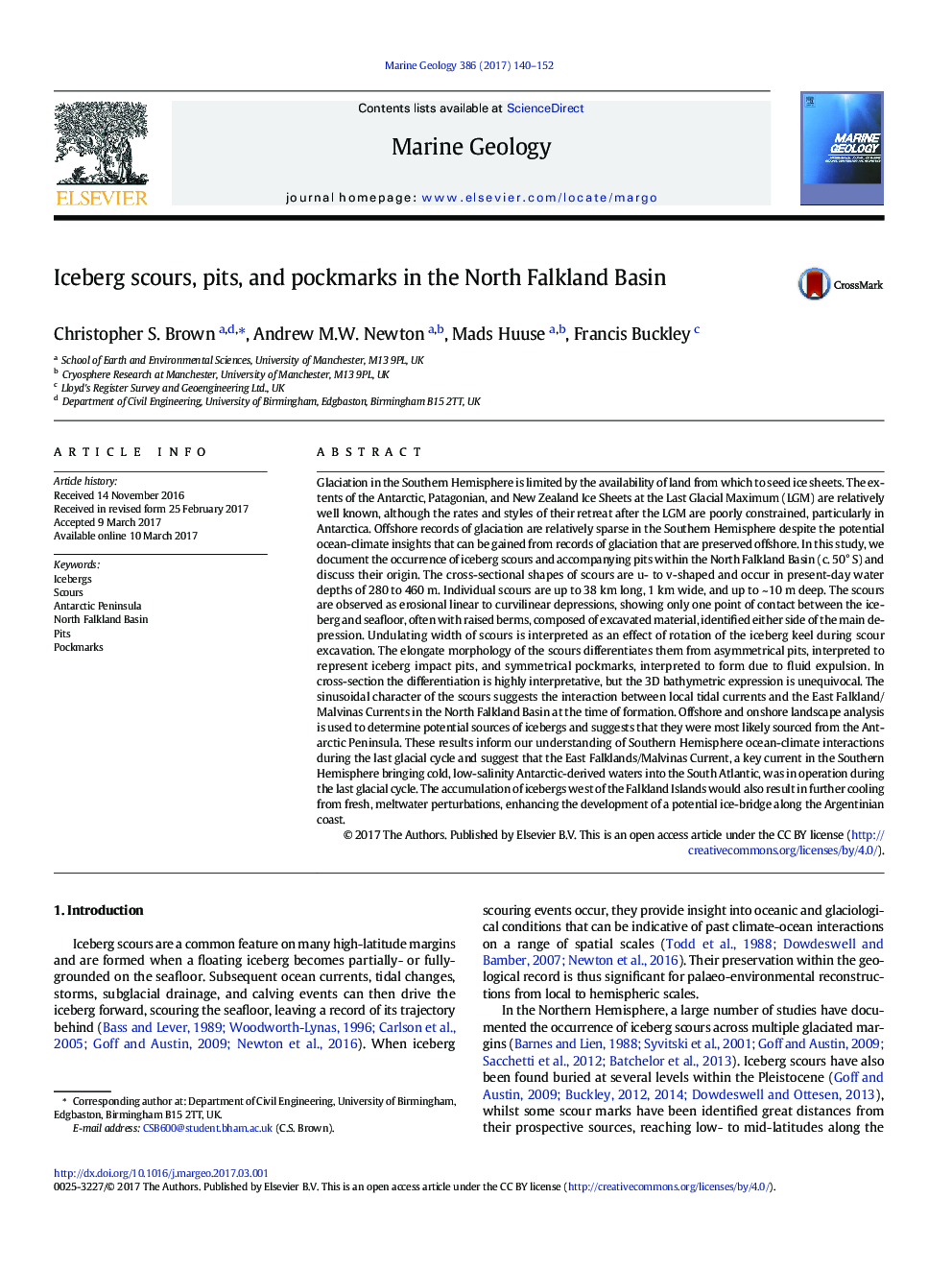| کد مقاله | کد نشریه | سال انتشار | مقاله انگلیسی | نسخه تمام متن |
|---|---|---|---|---|
| 5784518 | 1639066 | 2017 | 13 صفحه PDF | دانلود رایگان |
- First description of glacial geomorphology in the North Falkland Basin and surrounding areas
- Differentiation between pockmarks and pits
- Icebergs sourced from the Antarctic Peninsula during the Last Glacial Maximum into the Bellingshausen/Amundsen Sea
Glaciation in the Southern Hemisphere is limited by the availability of land from which to seed ice sheets. The extents of the Antarctic, Patagonian, and New Zealand Ice Sheets at the Last Glacial Maximum (LGM) are relatively well known, although the rates and styles of their retreat after the LGM are poorly constrained, particularly in Antarctica. Offshore records of glaciation are relatively sparse in the Southern Hemisphere despite the potential ocean-climate insights that can be gained from records of glaciation that are preserved offshore. In this study, we document the occurrence of iceberg scours and accompanying pits within the North Falkland Basin (c. 50° S) and discuss their origin. The cross-sectional shapes of scours are u- to v-shaped and occur in present-day water depths of 280 to 460 m. Individual scours are up to 38 km long, 1 km wide, and up to ~ 10 m deep. The scours are observed as erosional linear to curvilinear depressions, showing only one point of contact between the iceberg and seafloor, often with raised berms, composed of excavated material, identified either side of the main depression. Undulating width of scours is interpreted as an effect of rotation of the iceberg keel during scour excavation. The elongate morphology of the scours differentiates them from asymmetrical pits, interpreted to represent iceberg impact pits, and symmetrical pockmarks, interpreted to form due to fluid expulsion. In cross-section the differentiation is highly interpretative, but the 3D bathymetric expression is unequivocal. The sinusoidal character of the scours suggests the interaction between local tidal currents and the East Falkland/Malvinas Currents in the North Falkland Basin at the time of formation. Offshore and onshore landscape analysis is used to determine potential sources of icebergs and suggests that they were most likely sourced from the Antarctic Peninsula. These results inform our understanding of Southern Hemisphere ocean-climate interactions during the last glacial cycle and suggest that the East Falklands/Malvinas Current, a key current in the Southern Hemisphere bringing cold, low-salinity Antarctic-derived waters into the South Atlantic, was in operation during the last glacial cycle. The accumulation of icebergs west of the Falkland Islands would also result in further cooling from fresh, meltwater perturbations, enhancing the development of a potential ice-bridge along the Argentinian coast.
Journal: Marine Geology - Volume 386, 1 April 2017, Pages 140-152
